RARE! WWII "Type 1" Landing Craft Mechanized (LCM) Military Intelligence Combat Action 8x10 Photograph
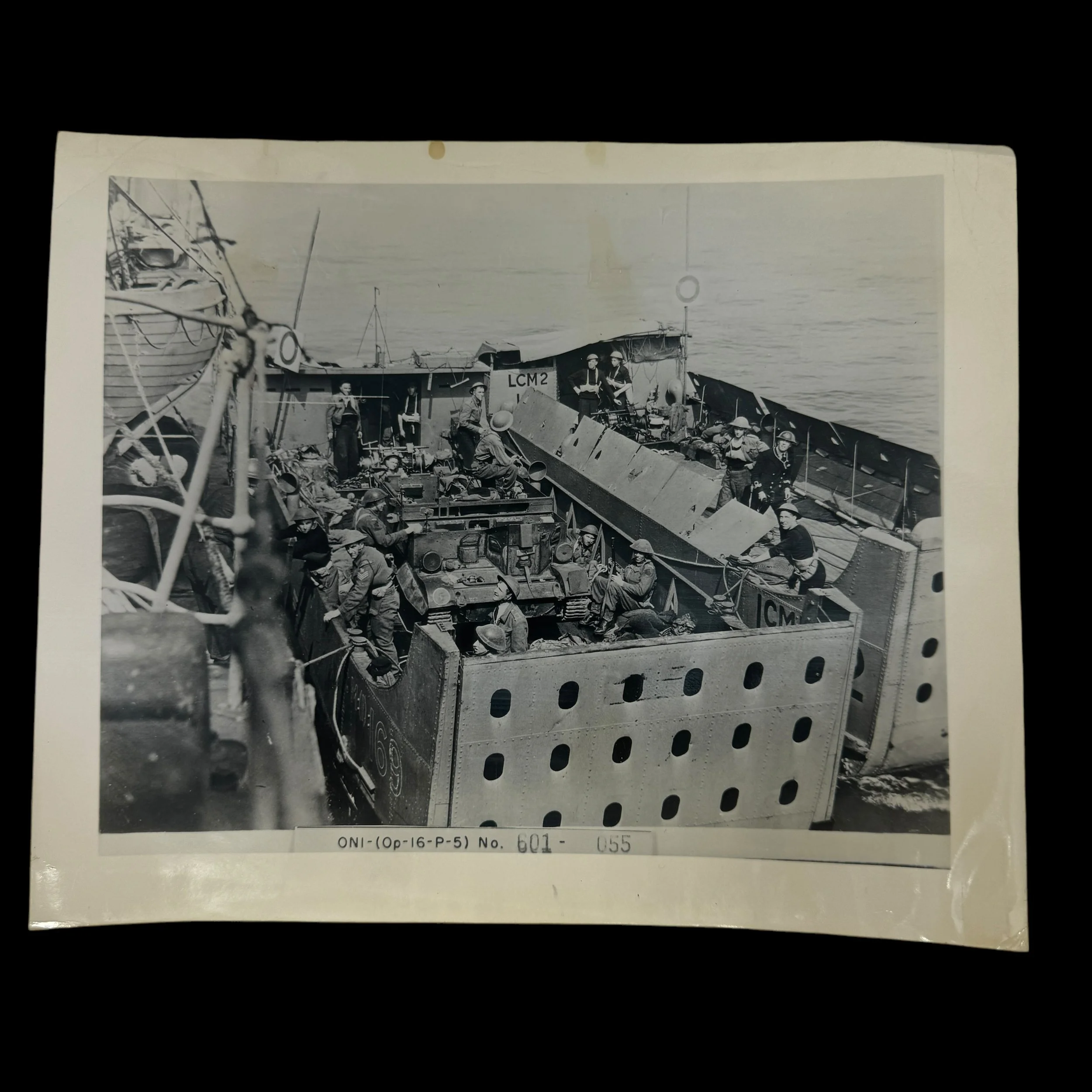









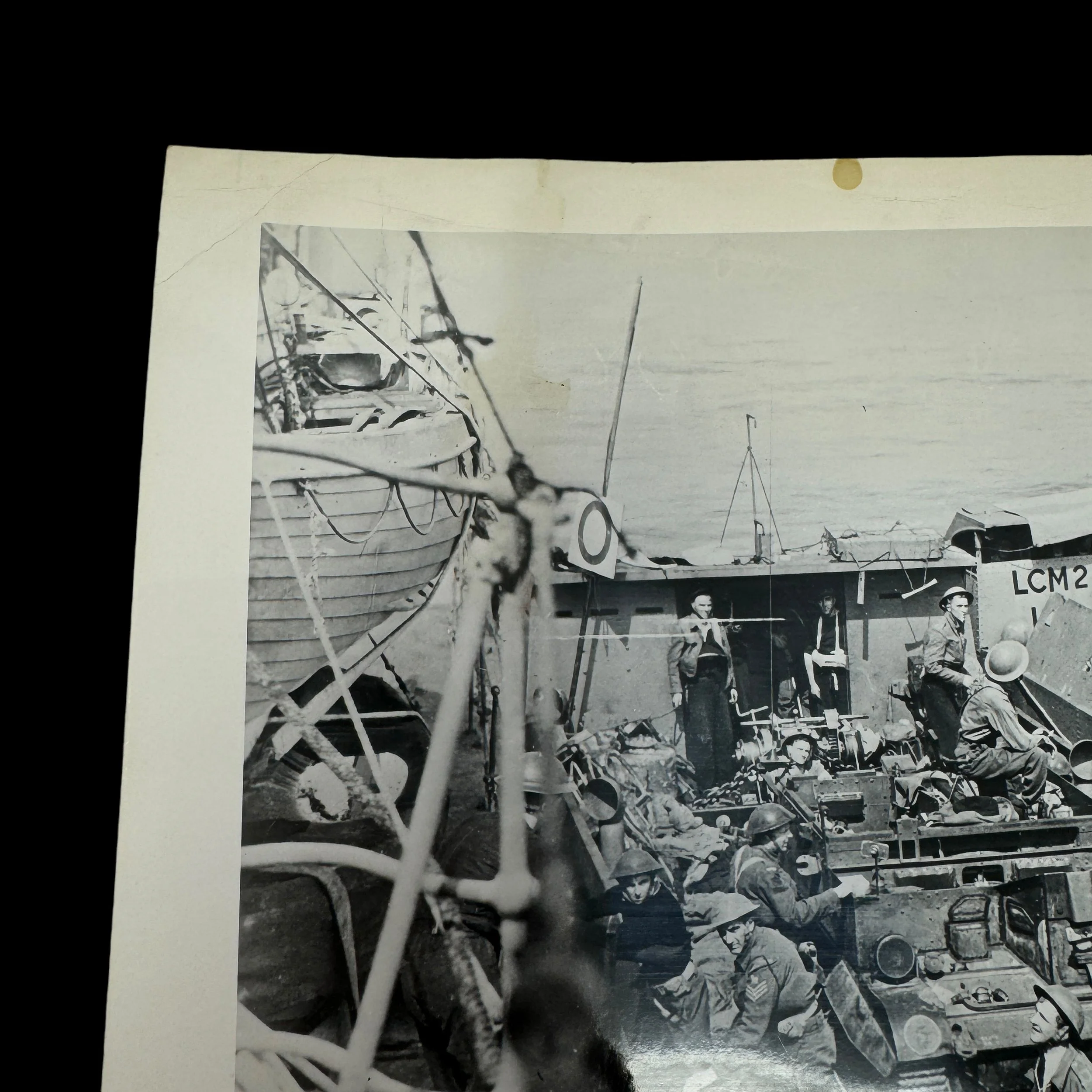
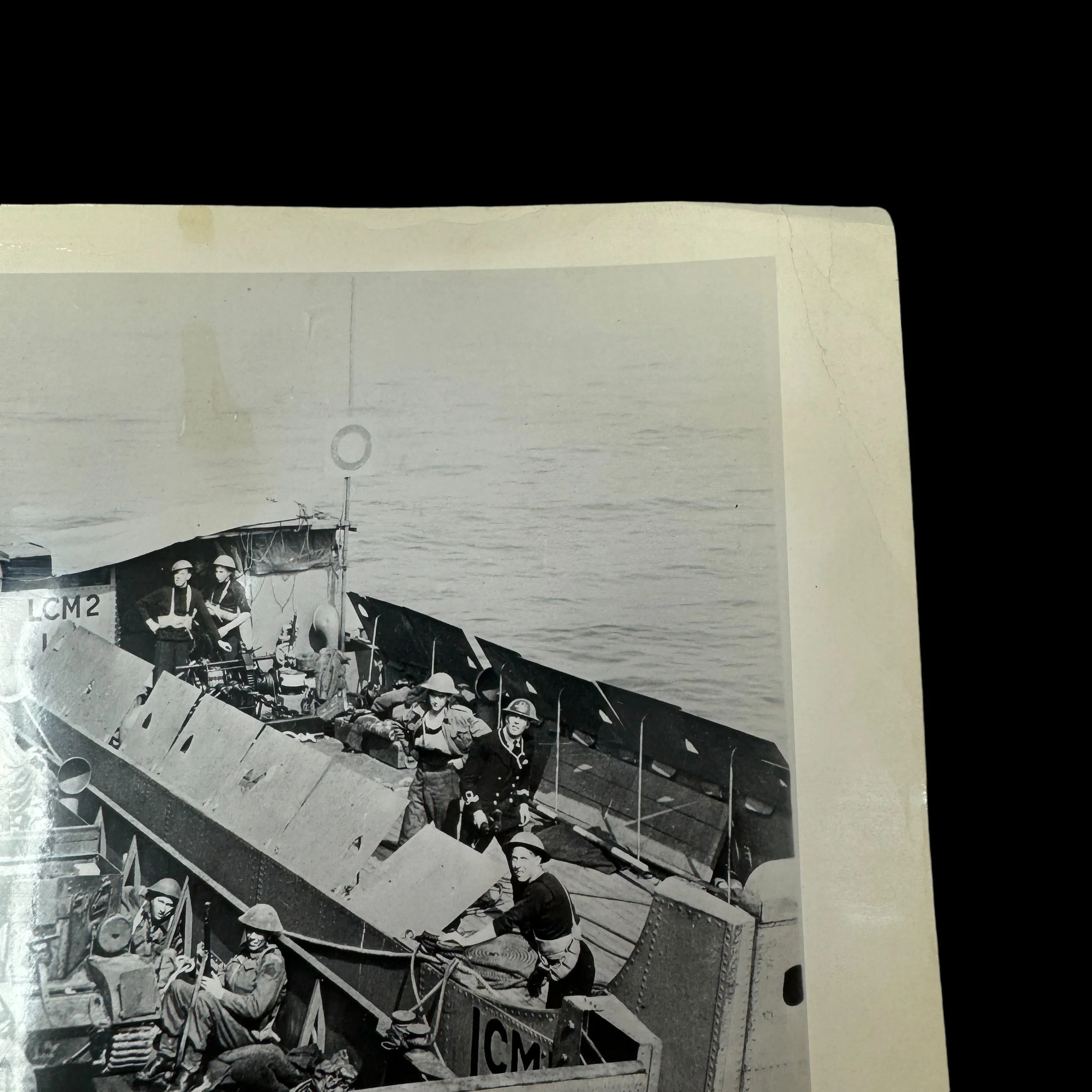
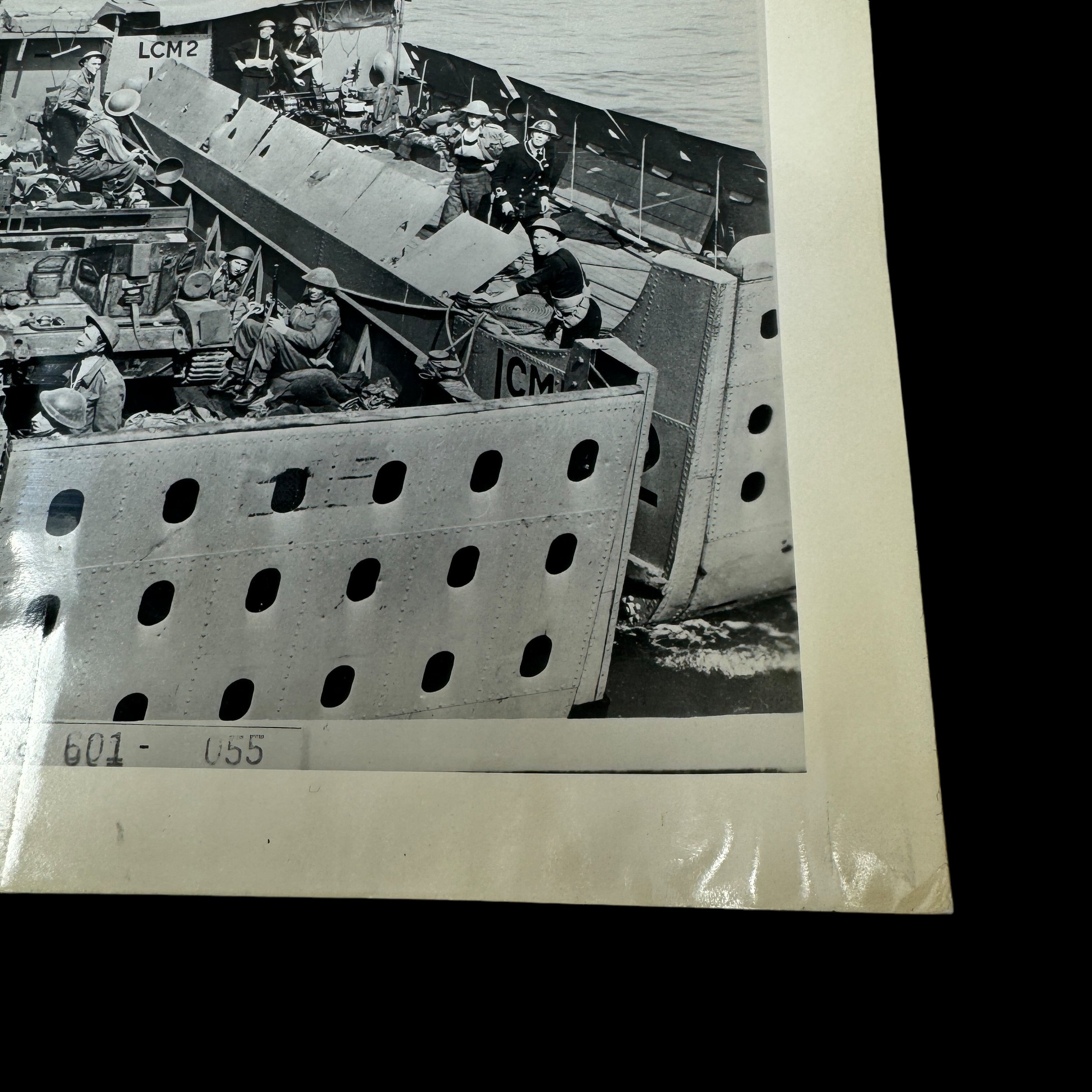
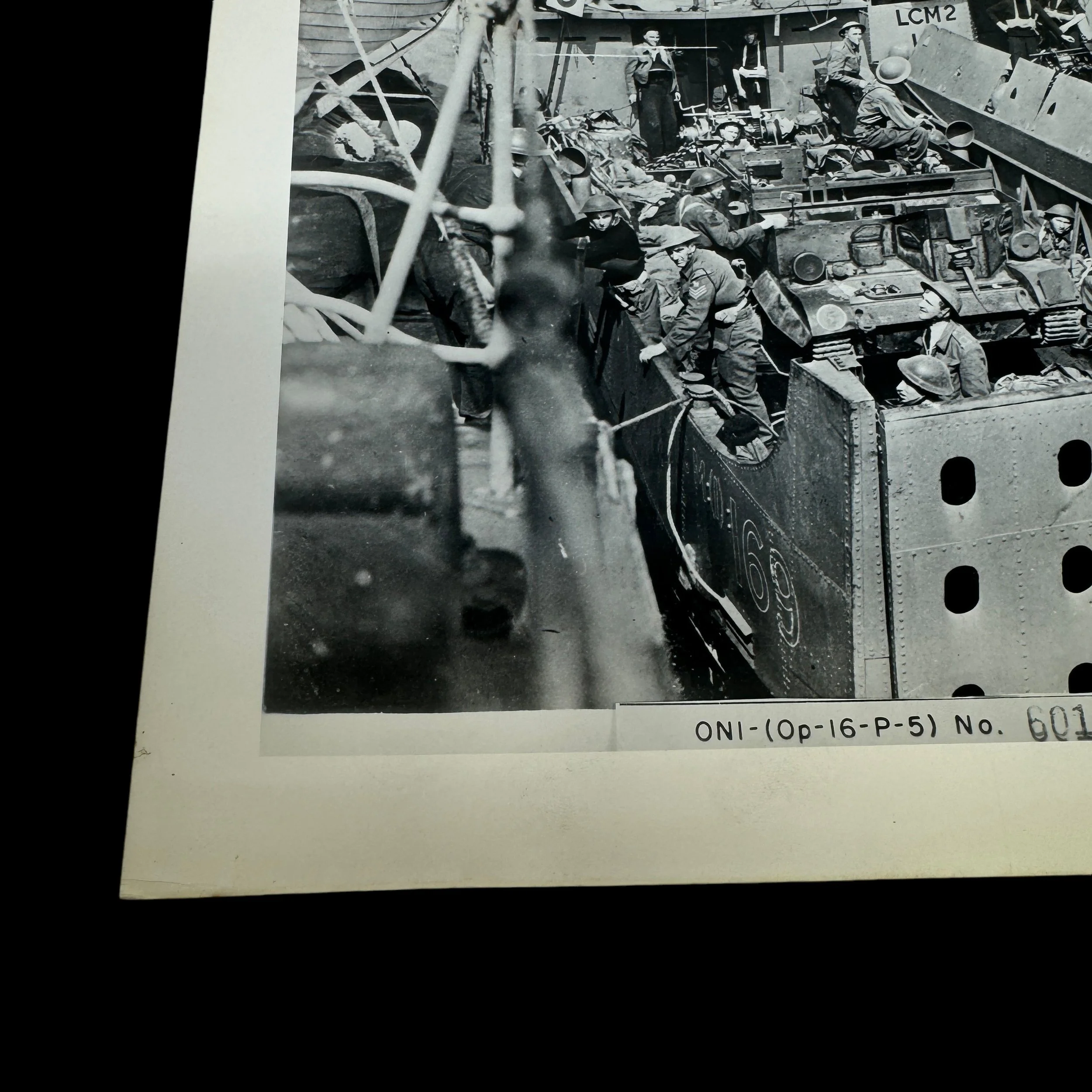
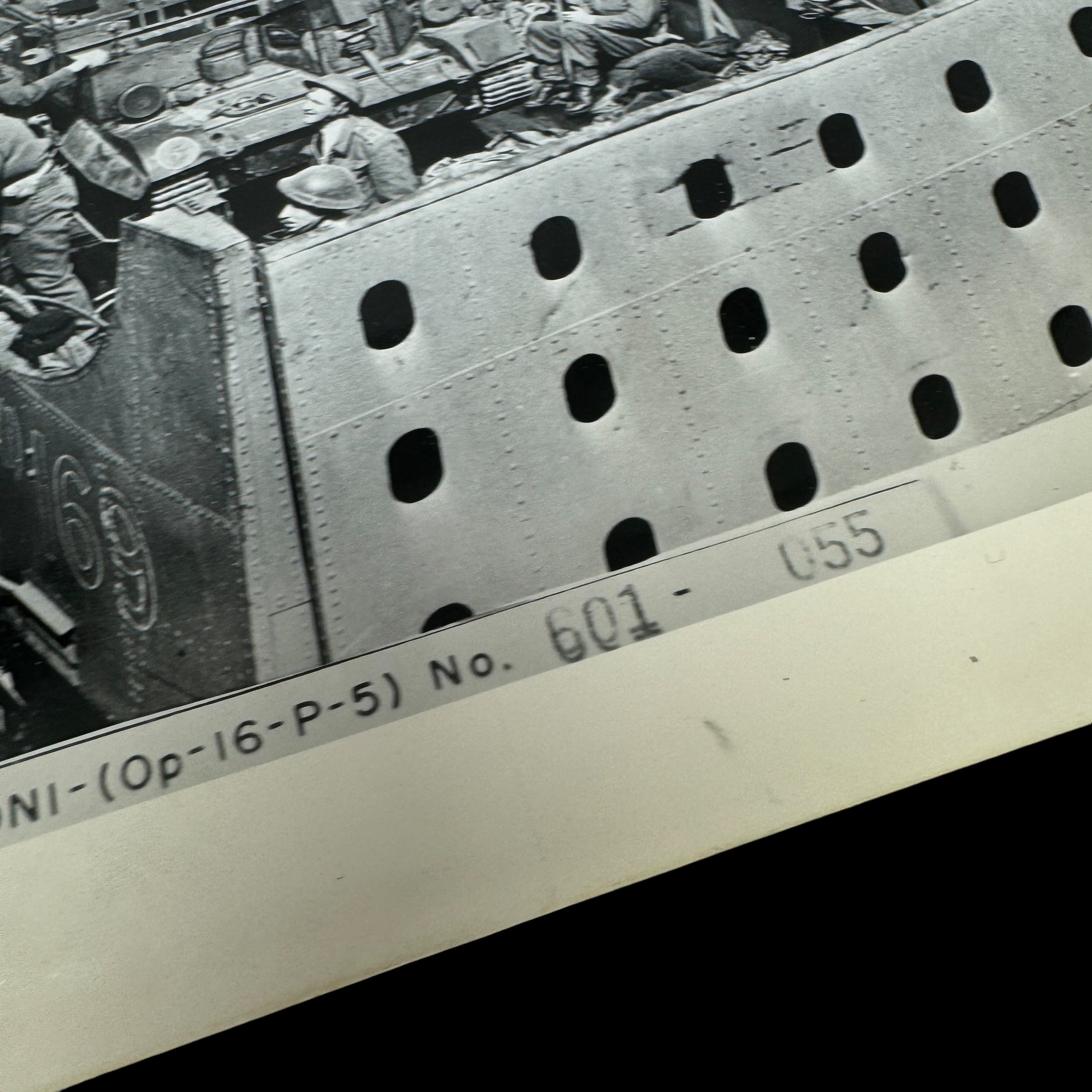

RARE! WWII "Type 1" Landing Craft Mechanized (LCM) Military Intelligence Combat Action 8x10 Photograph
Comes with hand-signed C.O.A. and a full historical write-up
Size: 8 × 10 inches
This incredibly rare and museum-grade TYPE ONE original military intelligence photograph of the WWII Landing Craft Mechanized (LCM). This rare Type 1 photograph showed a detailed view of the Landing Craft Mechanized in the combat zone.
The Landing Craft Mechanized (LCM), a pivotal vessel during World War II, played an instrumental role in amphibious assaults, facilitating the transportation of troops, vehicles, and heavy equipment from ships offshore to hostile beachheads. The development and deployment of LCMs marked a revolutionary leap in military logistics and strategy, and their use during the D-Day invasion of Normandy, along with many other amphibious landings across the European and Pacific theaters, underscored their importance. The LCM, sometimes referred to as a "Higgins boat," after Andrew Higgins, who designed many landing crafts used during the war, was one of the most reliable and effective crafts of its kind.
Origins and Development
Before World War II, the U.S. Navy lacked a specialized amphibious assault vehicle, which became a significant strategic oversight as the war loomed. The need to develop a craft capable of transporting tanks, heavy vehicles, and large numbers of soldiers onto hostile shorelines was evident, especially as military tactics shifted toward combined land and sea operations. In the 1930s, Andrew Higgins, a New Orleans-based boat builder, designed a variety of shallow-draft boats capable of navigating swamps and marshlands. His designs caught the attention of the U.S. Navy and Marines, who recognized the potential of such craft for amphibious warfare.
The LCM evolved out of earlier models of landing craft. While the more famous Higgins boat, the Landing Craft, Vehicle, Personnel (LCVP), was used to deploy soldiers onto beaches, the LCM was designed to carry heavier loads, specifically mechanized vehicles like tanks and artillery. The LCM’s robust design allowed it to handle much larger payloads than its predecessors and contemporaries, which made it indispensable for larger operations.
Technical Specifications
The LCM was a versatile and rugged vessel. By WWII standards, the LCM was a medium-sized landing craft, with a length of around 50 feet and a beam of 14 feet. It typically had a displacement of 50 tons. Its hull was constructed from steel, making it both durable and able to withstand the rigors of combat operations, including exposure to artillery, machine gun fire, and mines as it neared enemy-occupied shores.
The LCM was powered by diesel engines that provided it with a speed of around 10 knots (11.5 mph) when fully loaded. This might not seem fast, but it was sufficient for the short trips between larger ships and the shore. The craft could carry up to 30 tons of cargo, which usually meant a tank or several vehicles, though it could also carry up to 120 fully equipped troops. The craft’s bow was equipped with a drop-down ramp, which allowed for the quick unloading of personnel, vehicles, and supplies directly onto beaches or other shoreline environments.
The LCM's flat bottom design allowed it to approach shorelines in shallow waters, ensuring it could operate in a variety of conditions and terrains. Its low freeboard made it vulnerable to enemy fire, but the vessel’s speed and agility, combined with the strategic use of smoke screens, aerial bombardment, and naval artillery fire, helped protect the craft and its crew during landings.
Role in WWII Operations
The LCM saw widespread use throughout WWII, from the beaches of Normandy to the Pacific island-hopping campaigns. Its versatility made it indispensable in amphibious operations that required moving large amounts of equipment and soldiers onto enemy-held beaches. Its significance is perhaps most notable in the D-Day landings of June 6, 1944, during Operation Overlord, the Allied invasion of Normandy.
On D-Day, thousands of LCMs, along with other landing craft, shuttled men, tanks, and equipment from the massive Allied naval armada offshore to the beaches of Normandy. LCMs were crucial in delivering Sherman tanks and other armored vehicles to the Omaha and Utah Beach landing zones. These vehicles, once landed, provided the infantry with much-needed firepower to push inland and secure key positions. The LCM’s ability to land tanks in the early waves of the invasion helped overcome the heavily fortified German defenses along the Atlantic Wall.
In the Pacific theater, the LCM proved equally vital. Amphibious operations, such as those in the Solomon Islands, Tarawa, Saipan, and the Philippines, depended on LCMs to land both troops and heavy equipment on island beaches, many of which lacked established harbors. The island-hopping strategy required the rapid deployment of large numbers of men and machines, and the LCM allowed the U.S. to maintain a fast-paced tempo in the Pacific, helping to overwhelm Japanese defenses.
One of the key features that made the LCM essential in both theaters was its ability to operate under a wide range of conditions. Whether in the rough seas of the English Channel or the shallow waters off a Pacific atoll, the LCM could be relied upon to deliver its cargo to shore. Moreover, the craft’s durability allowed it to withstand the pounding it often took from enemy fire. While many LCMs were damaged or destroyed in combat, their sturdy construction meant that many survived to carry out multiple missions.
Challenges and Limitations
Despite its many advantages, the LCM was not without its flaws. Its open design meant that troops and equipment were exposed to enemy fire during the approach to the beach. The low freeboard, while advantageous for loading and unloading, left the LCM vulnerable to waves and bad weather, which sometimes resulted in swamping. Enemy defenses, particularly in heavily fortified areas like Normandy, posed a constant threat to the LCMs and their precious cargo.
Furthermore, the LCM required significant logistical support to be effective. Large numbers of LCMs needed to be produced, maintained, and transported to combat zones. In the case of Normandy, this meant months of preparation, including stockpiling vessels, coordinating naval assets, and planning amphibious landings. In the Pacific, the distances between islands and supply bases meant that LCMs had to be transported by larger ships or specially designed transports, adding another layer of complexity to operations.
Another limitation was the vulnerability of the LCM to enemy mines. In both the European and Pacific theaters, landing beaches were often heavily mined, and the flat bottom of the LCM made it especially susceptible to these underwater threats. Minesweepers and demolition teams were often deployed ahead of landing craft, but the danger remained a constant concern for LCM crews.
Legacy of the LCM
The LCM’s contributions to the success of Allied operations during WWII cannot be overstated. Without it, the Allied forces would have faced much greater challenges in landing tanks, trucks, and heavy artillery on enemy shores. The craft’s role in the success of amphibious operations in both Europe and the Pacific was critical in helping the Allies establish beachheads and ultimately win the war.
Post-WWII, the LCM continued to be used by navies around the world, with updated versions still in service today. The basic design of the LCM has influenced modern amphibious landing craft, and its legacy is still visible in contemporary military operations that require rapid deployment of troops and heavy equipment to shorelines.
In conclusion, the Landing Craft Mechanized (LCM) was an essential tool in the Allied amphibious warfare arsenal during WWII. Its ability to transport heavy vehicles and large numbers of troops to beaches under hostile conditions was critical to the success of many operations, from D-Day to the Pacific island campaigns. Though not without its limitations, the LCM was a durable, versatile, and reliable vessel that played a crucial role in the eventual Allied victory.